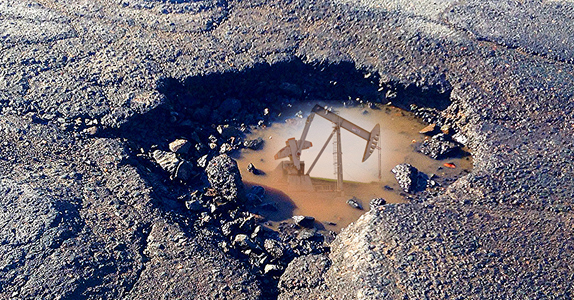
Route 285, which runs near our home south of Eldorado near Santa Fe, is a big part of my life. I bike south on it through the high-desert beauty of the Galisteo Basin. I drive north to Colorado ski areas and the Arkansas River Valley. It is the major thoroughfare through town, and we shop in stores along its route.
Last week, my wife and I looked forward to traveling home on it from its southernmost point, a small Texas town called Sanderson, 20 miles from the Mexican border. We’d be heading northwest towards Fort Stockton and Pecos, two undistinguished West Texas towns, and across the New Mexico line to Carlsbad, then Roswell. We expected a beautiful drive through sparse cattle country. Instead, we found ourselves in a Western version of Mad Max meets Dante’s Inferno meets L.A. freeway at rush hour. The culprit: our oil and gas industry run amok.
Ironically, we were returning from a 4,300-mile road trip through a long slice of Mexico, depicted in recent years as a perilous hellhole. During our month-long trip, in a country once known for its bad roads, nowhere we drove approached the miserable condition and dangerous truck traffic we encountered along the 140 miles between Fort Stockton and Carlsbad.
We faced four-inch deep potholes the size of manhole covers, a surface that rolled like a wind-driven sea, the painted center line long ago worn away, and a steady 80-mph river of water tankers, semi-trucks, and oversize pickups hauling huge compressors. The highway, made for lighter traffic, could hardly withstand the heavy load.
The destruction of a living environment was evident everywhere: not only in the awful condition of the road but in the methane burning like candles against the sky, a film of dark oil over everything, tributary roads of thick dust leading to well sites, the loud rumble of truck engines, a desert turned to apocalyptic landscape. It was no place for a home, a farm, livestock, humans. It was shocking.
Though it has delivered the country a boon in lower oil and gas prices, a lot of people fear the dangerous side effects of hydraulic fracturing, or fracking. At least a million gallons of water, mixed with 40,000 gallons of chemicals, are needed to complete one well. Many of the chemicals include carcinogens and toxins. Methane gas and toxic chemicals leach into nearby groundwater.
But what my wife and I experienced in those 140 miles goes beyond statistics. It is the destruction of an ambiance and the transformation of a landscape that once was healthy enough to feed cattle, grow some crops, support a family. Today, it feels destroyed, post-apocalyptic. Are we willing to trade our environment, our homes, our ranches, for gasoline that costs a dollar less per gallon? I am not.
Once past Carlsbad, our own Route 285 was given back to us… without trucks, without traffic, without that frightening sheen of oil over everything. It was the New Mexico we know and love: calm, pastoral, beautiful. Like the closing scene of a movie, the sun lay low on the western horizon, lighting up dramatic cloud banks to the north in rose and orange hues. Santa Fe lay straight ahead.
(Photos: Pothole by Mike Mozart / CC; Oil rig by Tim Evanson / CC)



Responses to “Oil and gas industry ‘run amok’ on New Mexico’s highways”